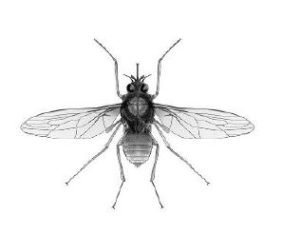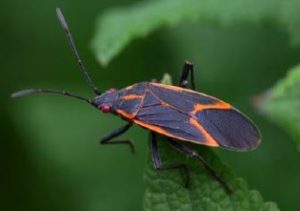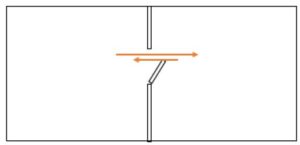Order: Diptera

There are around 30 orders of insects, more or less depending on how you break them down. One of the largest orders, with nearly 100,000 insects, is the order of Diptera. The Order Diptera (true flies) includes many common insects such as mosquitoes, midges, sand flies, blowflies, and the House Fly. The name Diptera, derived from the Greek words “di” meaning two and “ptera” meaning wings, refers to the fact that true flies have only a single pair of wings. All of the insects in this order have commonalities including: one pair of wings (forewings), hindwings reduced to club-like halteres, large and moveable head, compound eyes that are often very large and sucking, piercing and sucking or sponge-like mouthparts.
The Diptera probably have a greater economic impact on humans than any other group of insects. Some flies are pests of agricultural plants, others transmit diseases to humans and domestic animals. On the other hand, many flies are beneficial, particularly those that pollinate flowering plants, assist in the decomposition of organic matter, or serve as biocontrol agents of insect pests.
The first line of control for most true flies is through sanitation, removing sources of attraction and breeding grounds is important. If flies appear to multiply, a “fogging” or space treatment is an excellent method for eradicating exposed adults. Many times, a multi-faceted approach is needed, employing a wade variety of methods.
Submitted by: Rich Gibson ACE, CFSQA
The Box Elder Bug

Order: Hemiptera Family: Rhopalidae Genus: Boisea Species: B. trivittata
The boxelder bug is a North American species of true bug (order: Hemiptera). It is found primarily on boxelder trees, as well as maple and ash trees. During late summer and fall, boxelder bugs start to leave the trees from where they were feeding to find protected areas for the winter. Although nymphs may be present in the fall, only fully grown adults survive the winter. Adult boxelder bugs typically can fly several city blocks, although in some cases they can travel as far as two miles. Adult boxelder bugs are about 1/2-inch long, black with orange or red markings, including three stripes on the prothorax, the area right behind the head. Their wings lay flat over their bodies, overlapping each other to form an ‘X’. The immature nymphs are 1/16th-inch long and bright red when they first hatch. As they grow older and become larger, they are red and black.
One can potentially see all stages at any given time during the summer.
The most permanent solution to the boxelder bug problem is the removal of female boxelder trees from a property, although this may not be practical or desirable. A comprehensive approach to the control and exclusion of this insect during the overwintering period includes the sealing or screening openings and utilizing a residual insecticide applied und the exterior perimeter and exterior of the walls. This is most effective when exterior “Power Sprays” are completed on a periodic basis. These should be scheduled based on level and weather.
Submitted by: Rich Gibson, ACE, CFSQA
How Negative Air Pressure can have a Negative Impact on your IPM Program

Recently, CFS/RKE was called into a large pharmaceutical manufacturing site because the site’s Facility Manager was receiving numerous complaints of occasional invaders throughout the facility including breeches into Good Manufacturing Practices (GMP) space (these are ‘clean-rooms’ where product is manufactured).
Occasional Invaders constitute a group of insects, and other arthropods, which are not product infesting but simply pose a threat to product from gaining access into a building. Mostly, occasional invaders are attracted to exterior lighting and then gain access when pedestrian or overhead doors are opened. Because this group of pests are mostly attracted to lights, spiders will often spin webbing around the lights and around doorways and eventually they become another type of miscellaneous pest that can get into buildings and cause problems.
After a short time of conducting a site assessment, it became apparent that when doors were opened, the facility negative air pressure, in common areas, was literally pulling the outside air into the building and with that drawing many occasional invaders inside at the same time. This is a condition that I’ve seen at food facilities many times throughout my career. Many Pest Management Professionals (PMP) are simply unaware of the negative air pressure and how it serves as a root cause for the pest activity found inside a building.
In the case of this pharmaceutical plant, the site Facility Manager and the CFS/RKE representative simply had a meeting with the Plant Engineer who understood and said that he could lower the negative air pressure in the common areas. With that being done, the level of occasional invaders that were trending in the site’s insect light traps, and the number of staff sightings and complaints immediately dropped to acceptable levels. There also hasn’t been any sighting or breech into any GMP space since the air
- Take Away Tips:
• Air flow between interior areas can have an impact of threats to product safety
• Occasional invaders have no desire to be indoors, but can easily find their way in
• Simple adjustments to air handing units can make a huge impact
Submitted by: Hank Hirsch, BCE
CEO & Founder
RK Environmental Services and Comprehensive Food Safety






